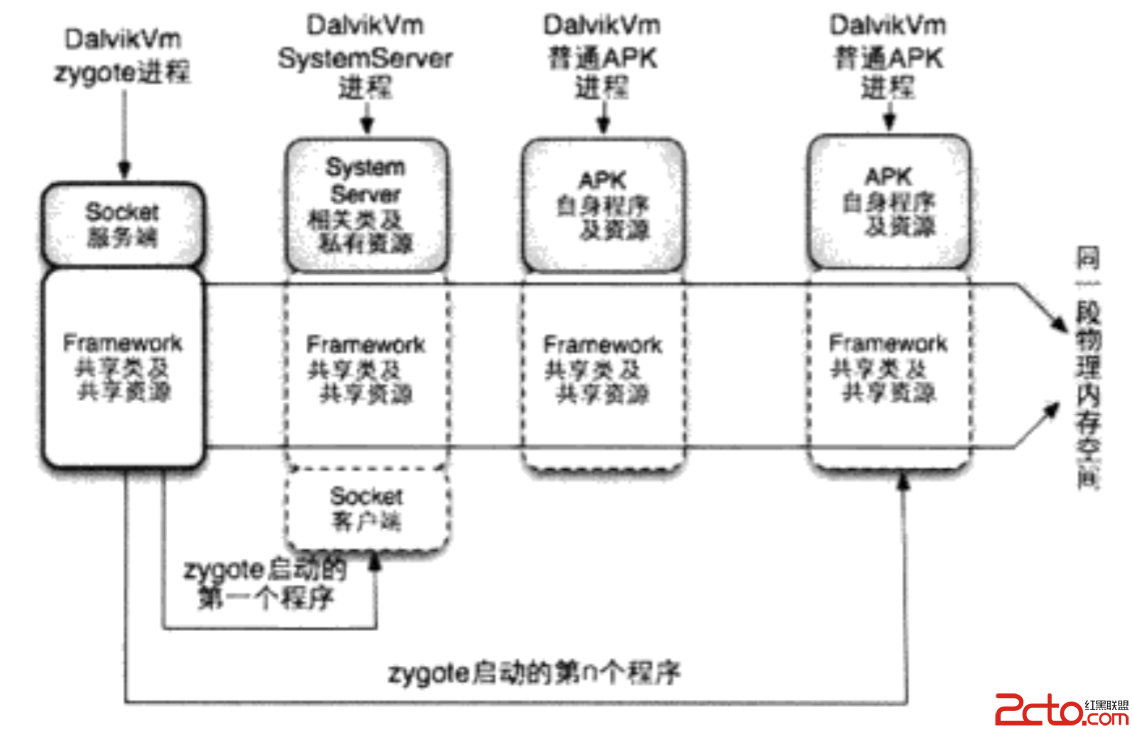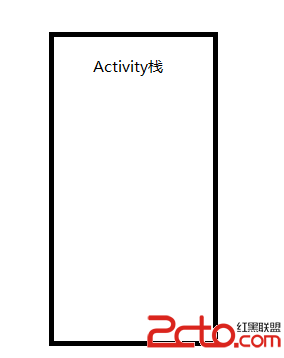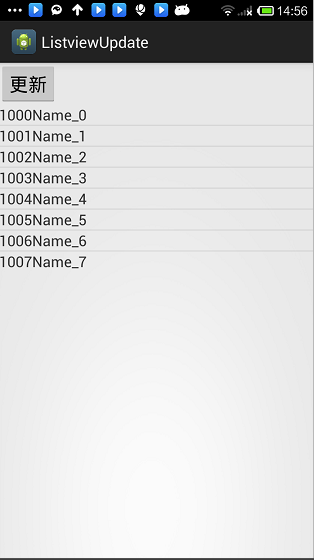編輯:關於android開發
我們應該都有類似的使用體驗,當一款APP需要更新是,進入界面會提醒有新的更新是否更新,這裡有那麼幾個步驟
1首先檢測當前版本
2判斷服務器中版本
3如果有更新則點擊更新,下載安裝包,下載完成後自動安裝
具體代碼怎麼實現呢?下面我們一起看一下
/*
* 獲取當前程序的版本號
*/
private String getVersionName() throws Exception{
//獲取packagemanager的實例
PackageManager packageManager = getPackageManager();
//getPackageName()是你當前類的包名,0代表是獲取版本信息
PackageInfo packInfo = packageManager.getPackageInfo(getPackageName(), 0);
return packInfo.versionName;
}
讀取服務器版本號
/*
* 用pull解析器解析服務器返回的xml文件 (xml封裝了版本號)
*/
public static UpdataInfo getUpdataInfo(InputStream is) throws Exception{
XmlPullParser parser = Xml.newPullParser();
parser.setInput(is, utf-8);//設置解析的數據源
int type = parser.getEventType();
UpdataInfo info = new UpdataInfo();//實體
while(type != XmlPullParser.END_DOCUMENT ){
switch (type) {
case XmlPullParser.START_TAG:
if(version.equals(parser.getName())){
info.setVersion(parser.nextText()); //獲取版本號
}else if (url.equals(parser.getName())){
info.setUrl(parser.nextText()); //獲取要升級的APK文件
}else if (description.equals(parser.getName())){
info.setDescription(parser.nextText()); //獲取該文件的信息
}
break;
}
type = parser.next();
}
return info;
}
下載
public static File getFileFromServer(String path, ProgressDialog pd) throws Exception{
//如果相等的話表示當前的sdcard掛載在手機上並且是可用的
if(Environment.getExternalStorageState().equals(Environment.MEDIA_MOUNTED)){
URL url = new URL(path);
HttpURLConnection conn = (HttpURLConnection) url.openConnection();
conn.setConnectTimeout(5000);
//獲取到文件的大小
pd.setMax(conn.getContentLength());
InputStream is = conn.getInputStream();
File file = new File(Environment.getExternalStorageDirectory(), updata.apk);
FileOutputStream fos = new FileOutputStream(file);
BufferedInputStream bis = new BufferedInputStream(is);
byte[] buffer = new byte[1024];
int len ;
int total=0;
while((len =bis.read(buffer))!=-1){
fos.write(buffer, 0, len);
total+= len;
//獲取當前下載量
pd.setProgress(total);
}
fos.close();
bis.close();
is.close();
return file;
}
else{
return null;
}
}
版本匹配、自動安裝
/*
* 從服務器獲取xml解析並進行比對版本號
*/
public class CheckVersionTask implements Runnable{
public void run() {
try {
//從資源文件獲取服務器 地址
String path = getResources().getString(R.string.serverurl);
//包裝成url的對象
URL url = new URL(path);
HttpURLConnection conn = (HttpURLConnection) url.openConnection();
conn.setConnectTimeout(5000);
InputStream is =conn.getInputStream();
info = UpdataInfoParser.getUpdataInfo(is);
if(info.getVersion().equals(versionname)){
Log.i(TAG,版本號相同無需升級);
LoginMain();
}else{
Log.i(TAG,版本號不同 ,提示用戶升級 );
Message msg = new Message();
msg.what = UPDATA_CLIENT;
handler.sendMessage(msg);
}
} catch (Exception e) {
// 待處理
Message msg = new Message();
msg.what = GET_UNDATAINFO_ERROR;
handler.sendMessage(msg);
e.printStackTrace();
}
}
}
Handler handler = new Handler(){
@Override
public void handleMessage(Message msg) {
// TODO Auto-generated method stub
super.handleMessage(msg);
switch (msg.what) {
case UPDATA_CLIENT:
//對話框通知用戶升級程序
showUpdataDialog();
break;
case GET_UNDATAINFO_ERROR:
//服務器超時
Toast.makeText(getApplicationContext(), 獲取服務器更新信息失敗, 1).show();
LoginMain();
break;
case DOWN_ERROR:
//下載apk失敗
Toast.makeText(getApplicationContext(), 下載新版本失敗, 1).show();
LoginMain();
break;
}
}
};
/*
*
* 彈出對話框通知用戶更新程序
*
* 彈出對話框的步驟:
* 1.創建alertDialog的builder.
* 2.要給builder設置屬性, 對話框的內容,樣式,按鈕
* 3.通過builder 創建一個對話框
* 4.對話框show()出來
*/
protected void showUpdataDialog() {
AlertDialog.Builder builer = new Builder(this) ;
builer.setTitle(版本升級);
builer.setMessage(info.getDescription());
//當點確定按鈕時從服務器上下載 新的apk 然後安裝
builer.setPositiveButton(確定, new OnClickListener() {
public void onClick(DialogInterface dialog, int which) {
Log.i(TAG,下載apk,更新);
downLoadApk();
}
});
//當點取消按鈕時進行登錄
builer.setNegativeButton(取消, new OnClickListener() {
public void onClick(DialogInterface dialog, int which) {
// TODO Auto-generated method stub
LoginMain();
}
});
AlertDialog dialog = builer.create();
dialog.show();
}
/*
* 從服務器中下載APK
*/
protected void downLoadApk() {
final ProgressDialog pd; //進度條對話框
pd = new ProgressDialog(this);
pd.setProgressStyle(ProgressDialog.STYLE_HORIZONTAL);
pd.setMessage(正在下載更新);
pd.show();
new Thread(){
@Override
public void run() {
try {
File file = DownLoadManager.getFileFromServer(info.getUrl(), pd);
sleep(3000);
installApk(file);
pd.dismiss(); //結束掉進度條對話框
} catch (Exception e) {
Message msg = new Message();
msg.what = DOWN_ERROR;
handler.sendMessage(msg);
e.printStackTrace();
}
}}.start();
}
//安裝apk
protected void installApk(File file) {
Intent intent = new Intent();
//執行動作
intent.setAction(Intent.ACTION_VIEW);
//執行的數據類型
intent.setDataAndType(Uri.fromFile(file), application/vnd.android.package-archive);
startActivity(intent);
}
/*
* 進入程序的主界面
*/
private void LoginMain(){
Intent intent = new Intent(this,MainActivity.class);
startActivity(intent);
//結束掉當前的activity
this.finish();
}
相關類
public class UpdataInfo {
private String version;
private String url;
private String description;
public String getVersion() {
return version;
}
public void setVersion(String version) {
this.version = version;
}
public String getUrl() {
return url;
}
public void setUrl(String url) {
this.url = url;
}
public String getDescription() {
return description;
}
public void setDescription(String description) {
this.description = description;
}
}
 大叔也說Xamarin~Android篇~日志的記錄,xamarinandroid
大叔也說Xamarin~Android篇~日志的記錄,xamarinandroid
大叔也說Xamarin~Android篇~日志的記錄,xamarinandroid無論哪個平台,開始哪種應用程序,日志總是少不了的,大家在Lind.DDD裡也可以看到大叔
 獲取data下目錄文件和查看android數據庫文件,dataandroid
獲取data下目錄文件和查看android數據庫文件,dataandroid
獲取data下目錄文件和查看android數據庫文件,dataandroid首先要是在真機上查看android數據庫文件必須要取得root權限,這裡怎麼獲取就不在多說。可
 Android Framework是怎麼啟動的?
Android Framework是怎麼啟動的?
Android Framework是怎麼啟動的? Framework運行環境是怎樣的? 安卓系統啟動過程其實是建立一套系統運行需要的環境。 Framework運行環境如下
 android:Activity啟動模式之standard
android:Activity啟動模式之standard
android:Activity啟動模式之standard 先看一下standard啟動模式的說明: 默認啟動模式,每次激活Activity都會創建Activity實
 Android——Listview不用notifydatasetchanged更新數據的方法,androidlistview更新
Android——Listview不用notifydatasetchanged更新數據的方法,androidlistview更新
Android——Listview不用notifydatasetchan